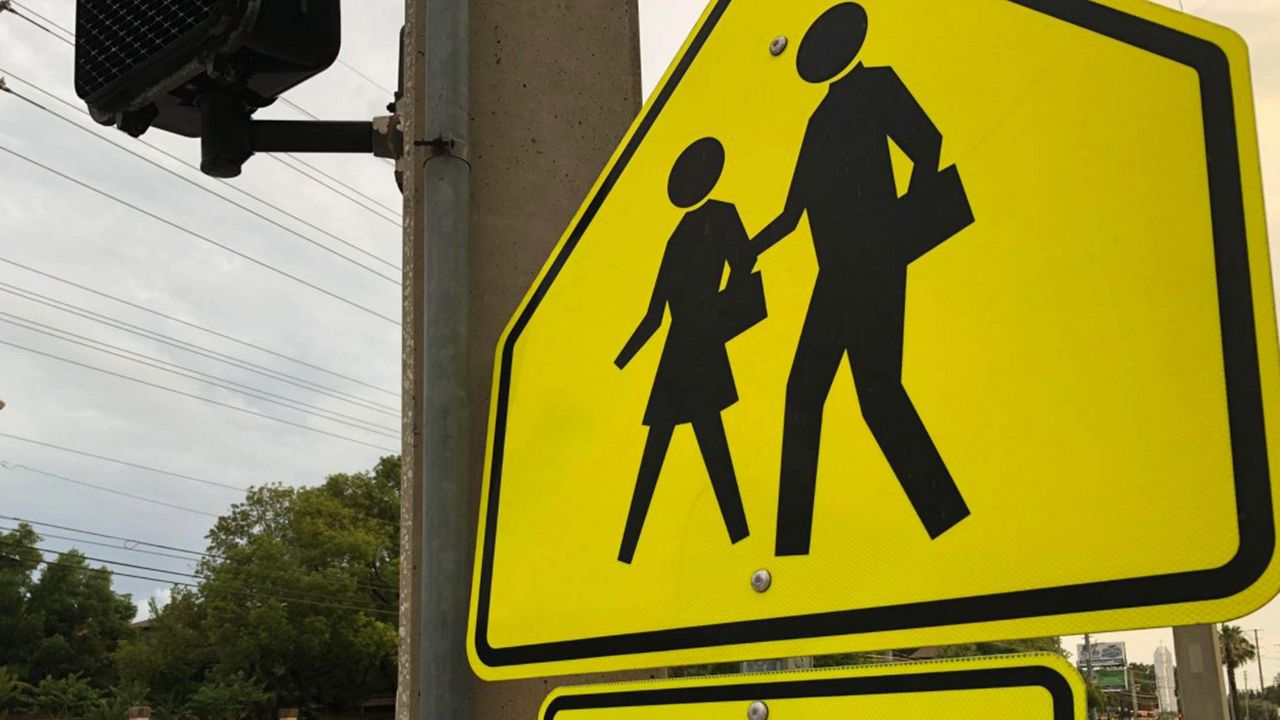LOUISVILLE, Ky. — Pedestrian deaths in Louisville surged in 2020, jumping 30% from 2019 and 275% from 2012, according to data provided by an official with the Department of Public Works.
Thirty pedestrians died on the city’s surface streets last year, up from 23 in 2019. The last two months of the year were especially deadly, with a third of non-interstate pedestrian deaths coming in November and December.
“I think we can do better,” said Dirk Gowin, transportation division manager of the Department of Public Works. “People are going to make mistakes on our roadway system, but they don't need to die from them.”
The city’s arterials -- large, multi-lane roads that carry high volumes of traffic -- were particularly dangerous. Preston Highway alone saw five pedestrian fatalities. There were three on Poplar Level Road, and two each on Bardstown Road and New Cut Road. Dixie Highway, known to some locals as "Dixie Dieway" due to the danger of crossing it on foot, saw only one pedestrian death.
The darkness was also a threat. Each of the city’s 30 pedestrian deaths in 2020 happened after the sun went down. “Usually three-fourths of these occur in non-daylight hours,” Gowin said. He also noted that most fatalities occurred while pedestrians were crossing the street mid-block.
Louisville roads are only getting more dangerous for pedestrians. Gowin has been tracking pedestrian fatalities since 2006 and says 2020 had the most he’s seen. A decade ago, 16 pedestrians died in the city. The number dropped to eight in 2012, before beginning an upward climb. It went over 20 in 2016, and has now reached a new milestone.
This despite programs such as “Look Alive Louisville,” launched in 2015 with the goal of reducing pedestrian fatalities to zero.
The 2020 data comes on the heels of “Dangerous By Design,” a national report from the urban planning nonprofit Smart Growth America. It recently ranked the country’s 100 biggest cities on how safe they are for pedestrians. The group’s Pedestrian Danger Index put Louisville 32nd on the list, in front of nearby cities such as Nashville (37th), Indianapolis (44th), and Cincinnati (72nd.)
Louisville’s increasingly dangerous roads reflect a national trend. In 2009, the pedestrian fatality rate per 100,000 people was 1.34 across the United States, according to the National Highway Traffic Safety Administration. That number increased to 1.92 in 2018, the most recent year for which data is available.
Experts said the reasons for this spike include the prevalence of smartphones, leading to more distracted drivers and more distracted pedestrians, an increased number of pickups and SUVS on the roads, which are likelier to result in death when involved in a pedestrian collision, and even climate change, which results in warmer nights and subsequently, more nighttime activity and higher levels of alcohol consumption.
Gowin said the city is making changes to improve its streets. A median has been installed on Dixie Highway, making it safer to cross the notorious thoroughfare. “We're already seeing a reduction in pedestrian fatalities there,” Gowin said.
Some crosswalks downtown have been timed so that pedestrians begin walking before any cars are allowed to start moving, reducing the chance that a driver won’t see someone on foot. Some city roads are also being repaved and repainted, reducing them from four-lane roads to three-lane roads with a turn lane in the middle. “That can offer over 20% crash reduction and it makes it a lot easier for people to get across the street,” Gowin said.
If Louisville is serious about meeting the goal of cutting pedestrian deaths to zero, it will require a shift in what we think roads are for, said Chris Glasser, director of the local advocacy group Streets for People.
For decades, roads have been treated solely as a way to move traffic as efficiently as possible, he said. He’d like to see road design that “naturally invites drivers to use the road more safely.”
“We’re not prioritizing the people on the streets,” he said. “We’re prioritizing moving traffic on those streets, and that’s mid-20th century, American suburban sprawl thinking.”
Glasser would like to see streetlight timing change so cars are forced to move more slowly down roads like Broadway. He’d like it to be easier for residents, both renters and owners, to request traffic calming measures such as speed bumps. And he’d like to see less emphasis on personal decisions and more on public policy.
“Telling people to wear bright yellow clothing drives me insane,” he said.
"Dangerous by Design" suggests that education campaigns and police enforcement are not the way to solve the problem of pedestrian fatalities. It says states and localities must “acknowledge that their approach to building and operating streets and roads contributes to these deaths.”
According to the Pedestrian Master Plan on Metro Government’s website, Louisville city has set a goal of reducing the rate of pedestrian crashes between 2010 and 2030. That will take a dramatic change, but it’s one Gowin is hopeful can be achieved with the right amount of public investment (more streetlights), road design changers (more one-way to two-way conversations) and more technology.
“I’m hoping cars get smart enough to figure out there’s a pedestrian up there,” he said. “That’s the thing that’s going to make the biggest difference.”
